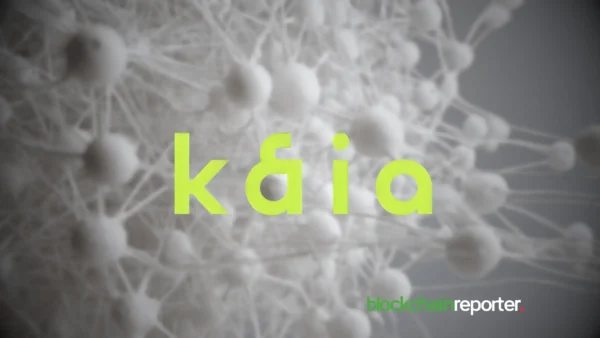
For years, one of the most dynamic and useful features of cryptocurrency exchanges has been the ability to stake cryptocurrency. By locking crypto away for weeks at a time, you provide liquidity to the platform, gaining passive income in return. These often impressive yields have been the central focus of many investors, allowing them to gain a continual stream of return from the crypto they own.
In 2022 alone, users staked over $20 billion in Ethereum across all platforms, with billions in Solana, Cardano, and BNB Chain also being added to the pot. Even with varying returns, the ability to add cryptocurrency to a staking account, leave it there, and watch passive crypto trickle in has been a major advantage of this space.
With its success in exchange spheres, it’s no wonder that crypto staking has made its way to Web3 gaming. As an industry on the rise, Web3 game developers are actively looking for ways to improve the user experience of their communities. Alongside game improvements, additions to the earning potential of users are a highly prioritized and effective objective.
In this article, we’ll turn to the world of staking in Web3, demonstrating how Web3 games like LandRocker are actively boosting what users can earn from their games by incorporating staking rewards into the fabric of gameplay.
Why Is Staking So Popular within Crypto?
At its core, blockchain systems use different validation mechanisms to validate new transactions on their ongoing ledger systems. The original, and most demanding, of the validation mechanisms is proof-of-work, which has now fallen from favor with most blockchain networks. Another validation system is Proof-of-Stake, which uses randomly selected users to validate the next block in the system.
While PoS doesn’t require nearly as much energy as PoW, it does require a huge base of users that all put their coins into a shared staking or liquidity pool. At random, one of the users in the staking pool will validate the next block, gaining its rewards. As to share these rewards and ensure everyone involved gets their fair share, staking programs have been made by crypto exchanges.
Users can add their cryptocurrency to a staking pool, providing liquidity to the project while also facilitating the staking mechanism. In return for locking their crypto away, they get a constant stream of passive income, often paid each day back into their account.
For crypto users who don’t want to sell their cryptocurrency, the ability to add it to a staking pool and get continual returns allows them to profit while still holding their positions. This mechanism for passive income has become hugely popular over recent years, with staking platforms having billions of crypto entered into them each year.
How Does Web3 Incorporate Staking for New Gamers?
One of the core issues with incorporating staking into Web3 is that many users are unfamiliar with this mechanism. Cryptocurrency trading is often difficult to manage and hard to get started with. Even for users who are active in Web3 spaces, there is no guarantee that they have had experience with cryptocurrency exchanges.
In order to break down this barrier to entry, Web3 gaming is attempting to streamline staking by presenting it as part of the core gameplay loop. Instead of having staking as a tertiary activity that users need to understand on a different platform, Web3 developers are embedding opportunities for gaining and staking cryptocurrency right into their games.
LandRocker, a mining and space exploration Web3 game, is a fantastic example of this. In their gameplay loop, users can mine through new worlds and stumble across NFT rewards, digital assets, and cryptocurrency for their wallets. The cryptocurrency that underpins their ecosystems is LRT. Users are able to stake any LRT they find, generating more fuel, advanced machinery for future explorations, or simply in a liquidity pool for passive rewards.
Instead of creating a complex system where gamers have to learn more about staking and crypto trading, incorporating everything into the actual game provides easy onboarding. Users can gain two huge benefits from this system. The first is that they have direct access to passive income through staking. The second benefit is that they are able to expand their experience strategically, using staking as an in-game mechanism to further certain objectives.
Both for players who want to engage with P2E games to generate funds and those who simply look for enjoyment, the in-game staking mechanism offers something for everyone. This striking example of staking in gaming demonstrates why Web3 gaming is having such success with this crypto exchange mechanism.
By making it a part of the experience, rather than an add-on, LandRocker successfully onboard Web3 users into staking without confusion, frustration, or difficulty.
Final Thoughts
Web3 games have the unique opportunity to engage with cryptocurrency mechanisms to their fullest extent, without users having to suffer through the most challenging parts of navigating this ecosystem. By creating a video game platform where users can engage with earning, trading, and staking crypto, Web3 successfully brings these powerful earning potentials to the wider gaming community.
Fusing staking into the core gameplay loops, with a variety of objectives based on what a player wants to explore or unlock, allows users to get more from the ecosystems they interact with. LandRocker helps further both the gaming and crypto-enthusiast experience by creating a rich world filled with opportunities.
From earning NFTs and crypto to staking for in-game or crypto rewards, LandRocker exemplifies a crypto-first Web3 Play2Earn ecosystem done right.









